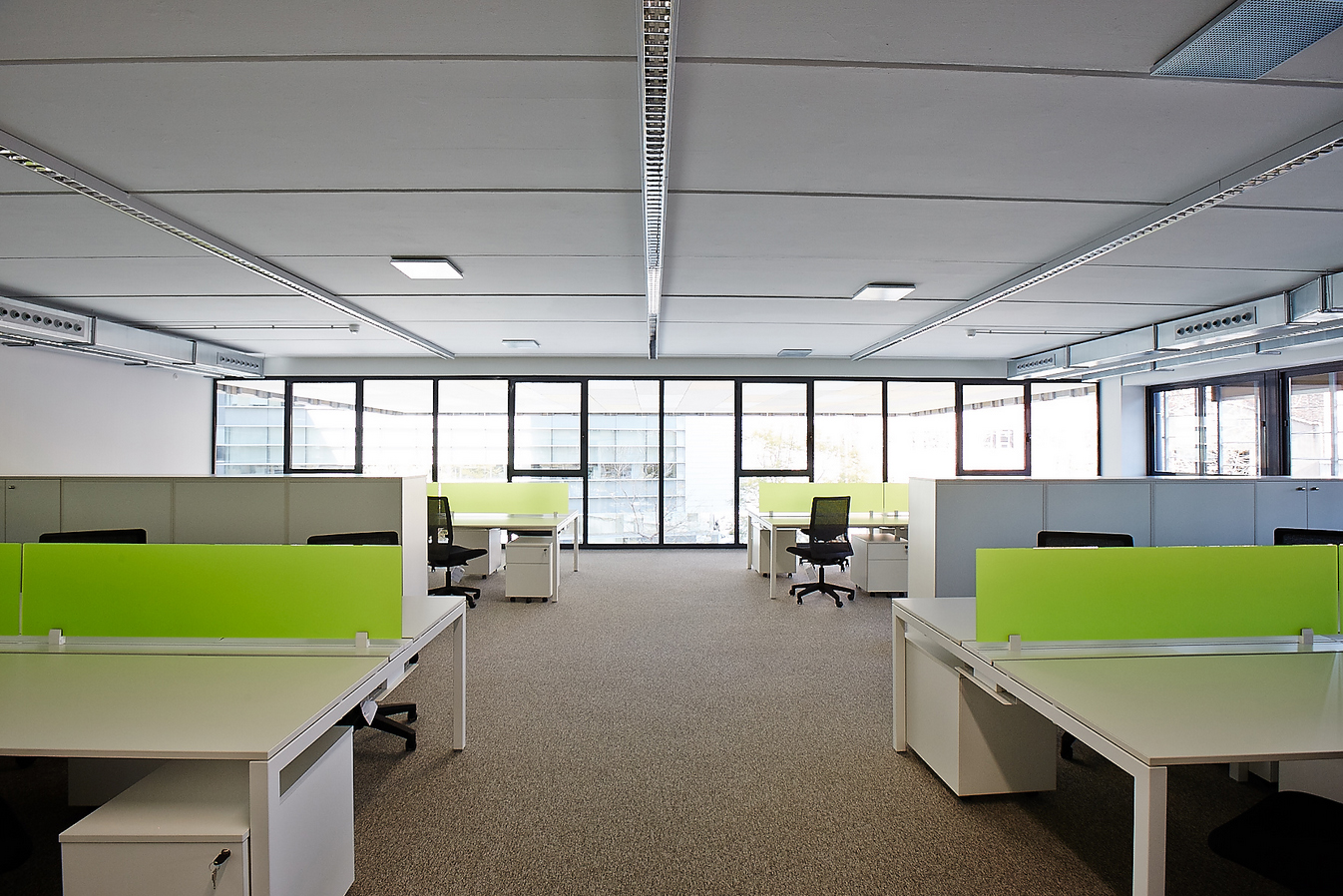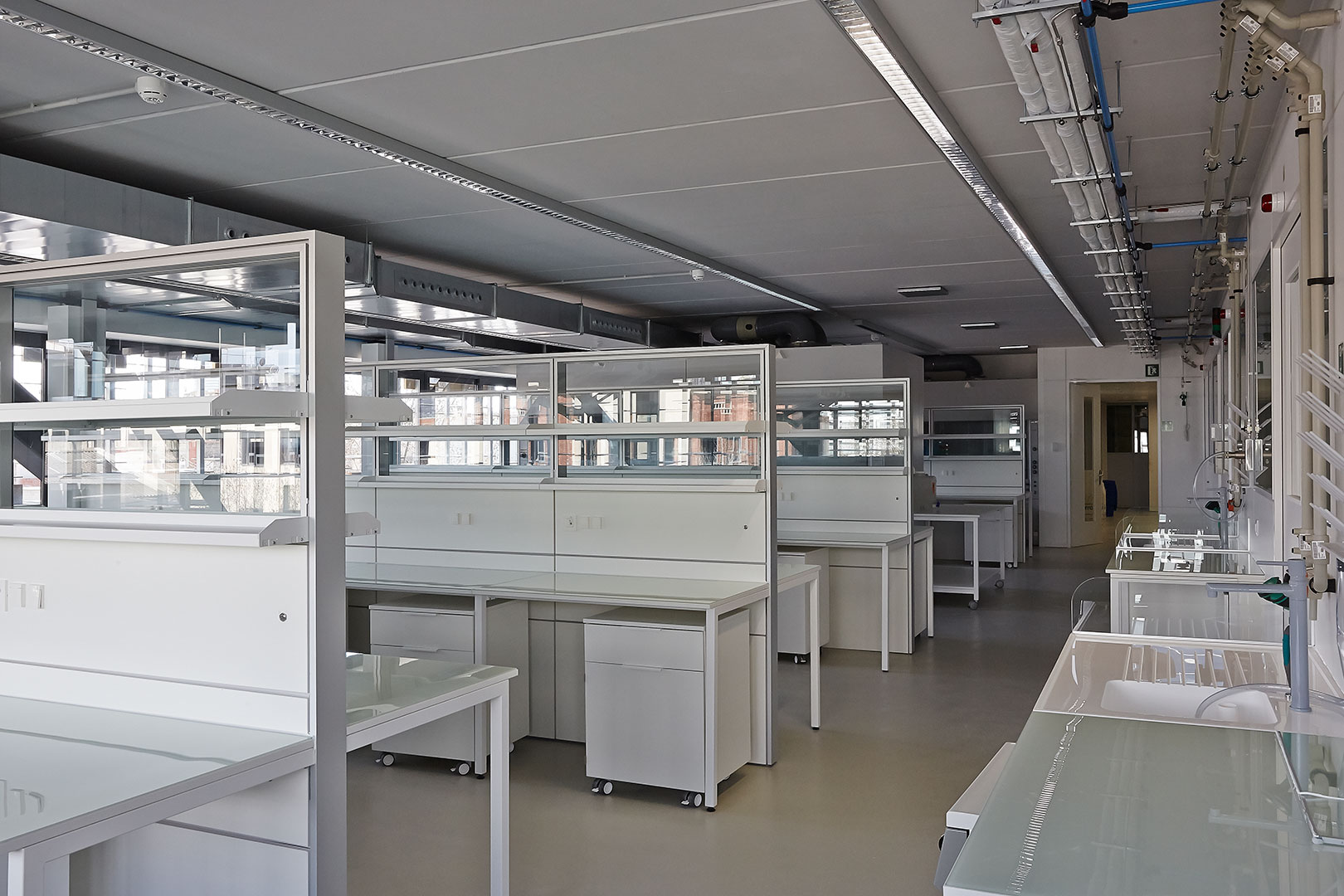Leitat, visible honeycomb slabs to take advantage of inertia, with vents to channel stale air.
On May the 27th, the round table called “LIGHTWEIGHT vs HEAVYWEIGHT SUSTAINABLE CONSTRUCTION” took place virtually. It was organized by enerCORE – Knowledge Centre HybridGEOTABS and the University Centre for Energy Efficient Buildings CTU in Prague.
Wood, or concrete? What are the advantages of lightweight, wooden-based constructions, and where should we choose the heavyweight, concrete-based systems? How does the choice of the building construction system affect the embedded energy, the operational costs and the end-of-life stage? Are there any other alternatives, or can these two boundary approaches be combined? These were the questions suggested to be addressed during the event, introduced by Lukas Ferkl (CTU UCEEB) and moderated by Lieve Helsen (KU Leuven) and Wim Boydens (Boydens Engineering).
Stefan Winter (Technical University of Munich) started the conversation by showing multiple examples of existing timber structures, noting that most of these structures count on heavy structural parts necessary to balance their lightness. In that regard, he explained that timber structures are the ones that have 50% and more structure in timber, rarely 100%. Already at this point, it was clear which direction the conversation was going to take us: hybrid constructions!
Illari Aho (Uponor) added that light/ heavy or hybrid is not about construction materials, these concepts can be represented by different materials. He pointed out that the first use of heavyweight construction were the caves, improving the thermal comfort with their high thermal mass and capacity to store the fire heat. He also said that the 3 biggest drivers of change in the construction sector are Increased productivity, Environmental footprint and Digitalization, to be exemplified in industrial construction or on-site prefabrication workshops and other strategies. Industrialization: we also believe there is no other way to the circular heaven.
Wolfgang Streicher (University of Innsbruck) explained that the thermal mass of the construction is not a question of thickness- a large thickness of heavy materials is not needed, given that the heat does not reach great depths in the day/night circle that is normally relevant. The total area of the thermal mass is more important for the final result.
Bjarne Olesen (Technical University of Denmark) continued in technical terms, speaking about the heating and cooling systems based on thermal inertia. He sees their advantage in low operation temperature or in little maintenance as they are not seen. The potentially complex issue is the response time, making these systems difficult to control, but if they are designed to compensate only for internal changes, the response is fast. Therefore, good thermal insulation of the envelope is important.
Night cooling was mentioned in reference to the ventilation and its practical challenges, such as burglary through the window open at night, and a potential to resolve it with burglary resistant solar shading systems- a nice input for innovation.
Together with Anne Caminade (Lemon Consult), our role was to summarize the take-away from the conversation. Anne mentioned the importance of focusing the design on the building user. On our side, the resume would be that the lightweight approach is great for the building envelope given its potential for low environmental impact and efficient thermal insulation, while the heavyweight structures are ideal to provide the thermal inertia in the interior. I wanted to point out the acoustic and fire resistance advantages of some heavyweight structures, that were not mentioned, but are totally compatible with the general conclusion. Also, providing system solutions that are proven to comply with the regulations is important to allow the application of innovative and combined systems, such as can be the hybrid ones.
Zuzana Prochazkova, architect
Responsible for the R&D+i department
You can watch the whole event here.
Interesting resources:
Manual of Multistorey Timber Construction
Detailed information about timber systems and their performance


